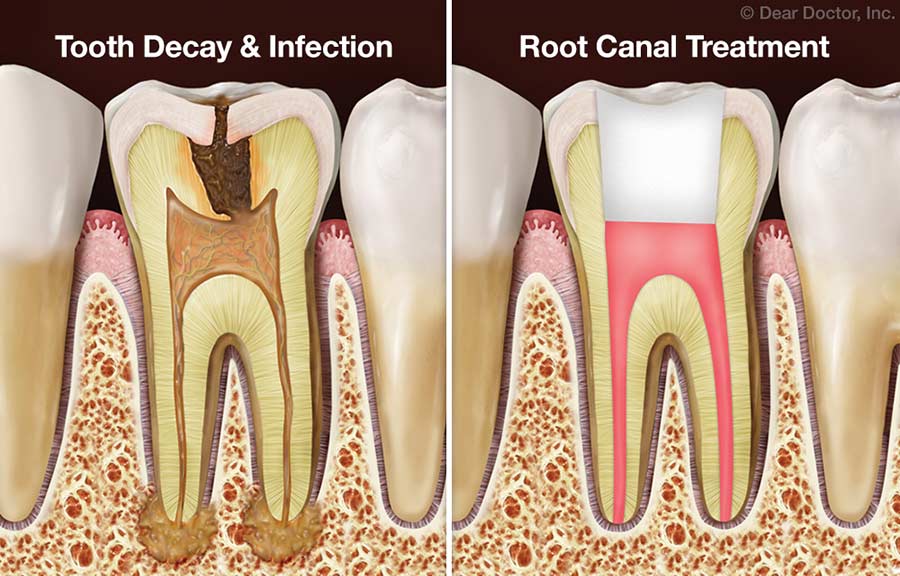ROOT CANAL
WHAT IS ROOT CANAL THERAPY?
Root canal therapy is a procedure that is performed to remove the infection from the interior of your tooth in order to save it. This is done by removing the infected pulp and cleaning the interior of the tooth. By treating the tooth with root canal therapy, we are able to prevent the need for a tooth extraction.
How an Infection Develops

While your teeth are strong, physical damage or decay can cause serious issues. If the damage or decay goes past the outermost layer of your teeth and into the dentin, bacteria can freely travel inside. Inside the tooth, bacteria begin to multiply. They also begin to irritate the soft tissue, called pulp. This leads to inflammation and a significant amount of pain. When an infection develops, treatment is needed right away. Without it, the infection only continues to grow worse. Bacteria can spill out through the root of the tooth, which causes an abscess to form. An abscess is a sac that forms to contain the bacteria in an attempt to prevent it from spreading. Over time, the abscess can grow larger and may even rupture, which can be dangerous.

Signs of an Infection

A toothache is only one sign that an infection has developed. There are several other symptoms including:
| • | Swelling in your jaw or node. |
| • | Lingering pain or sensitivity, which can indicate a dying nerve. |
| • | A bad taste in your mouth that does not go away. |
| • | An abscess. |
| • | Bone loss in your jaw. |
There are a few different reasons why a root canal is needed. Common reasons include:
- Tooth decay has reached the inner layers of the teeth.
- Cracks or chips in your teeth have extended past the enamel and into the inner layers, affecting the pulp.
- The pulp has become inflamed due to a large filling.
- An abscess has formed at the root of your tooth.How is a Root Canal Performed?
A root canal is performed under a local anesthetic. Sedation may also be provided if you are anxious or unable to sit still. We start by drilling a small access hole in the top of your tooth. We then use small tools to remove the infected pulp and nerve of the tooth through this hole. We then shape the canals inside of the tooth and disinfect the entire interior. A special material called gutta percha is placed into the empty space. This material seals the canals. Finally, a crown is placed on the top of the tooth. The crown functions to protect the tooth from a new infection while also restoring its strength so that it can continue to function normally.
For more information about Root Canals, please visit Why Root Canals Are Performed and How They Work.
